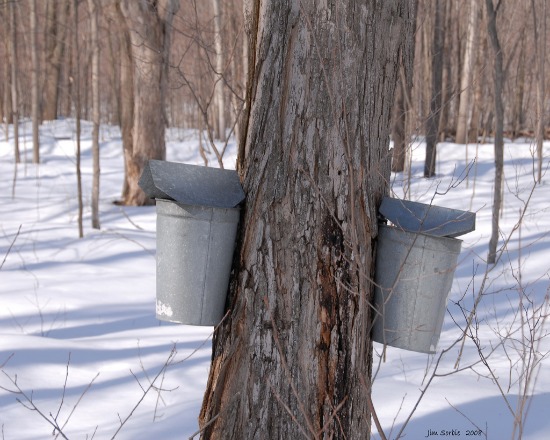What do America’s coffee preferences look like on a map? Why don’t young farmers get insured? Why aren’t we already drinking maple water? And how can food serve as, ahem, an olive branch? This and more in what our editors are reading this week.
On the Anatomy of Thrift: Side Butchery — Vimeo
Caroline Lange loves this video, by videographer Farmrun, for its smarts, its sense of humor and its ability to make butchery really beautiful. Plus, there’s a lot of wisdom: “The redemptive power of meat—to bring life again—is amazing.” It’s worth a watch.
Lauren Wilson: Gastrodiplomacy: Cooking Up a Tasty Lesson on War and Peace — NPR
Few experiences are more humanizing than eating and drinking. Perhaps the fact that we’re obligated to ingest (with pleasure, ideally) generally overshadows the power of these simple acts as powerful teachers and mediators.
Gabrielle Langholtz: New maple water drink has untapped potential — Cornell Chronicle
Seeds aren’t even in the ground yet, but serious locavores know March is high season for one of the most delicious harvests of the year: maple sap. When nights are below freezing but days climb up around 50, sugar maples send sweet sap up from the roots to the swelling buds–and if the tree has been tapped, some of it also runs out into a waiting bucket.
The sap looks just like water and must be boiled way down to make syrup — 40 gallons of sap to make a single gallon of what you put on waffles. But now, entrepreneurs are selling the straight sap by the bottle, to drink. It’s just barely sweet, and full of minerals.
Move over, coconut water.
Caroline Lange: Why Don’t Young Farmers Get Insured? — Modern Farmer
“In the face of costs like irrigation, compost and feed—just the basic things you need—health insurance can seem like a bonus you may not be able to afford,” says Emily Oakley of the National Young Farmers Coalition in this Modern Farmer article. But Obamacare is making it easier for farmers (particularly self-employed small farmers) to squeeze health insurance into their slim budgets, which could lead to healthier farmers and a decreased risk of post-accident bankruptcy, meaning people will be more likely to “get into farming and stay in farming.”
Amy Zavatto: North America’s Regional Coffee Preferences, Mapped — Sprudge
We’ve been working hard putting together Edible’s Coffee Summit 2014: The Reboot (the last and first of these industry-centric day-long coffee klatches was in 2009; stoked it’s back in action this year), so coffee has been on my mind. A lot. And while a project like this makes one keenly aware of the rise and rise of our urban cultural curiosity, knowledge, and obsession with great beans, what’s made from them, and who’s responsible for them, this article on Sprudge by Llewellyn Sinclair on our national chain-focused, drive-through coffee drinking habits was interesting. The story focuses on two maps made by one Dr. Nathan Yau, who collected data from sea to shining sea on North American big chain coffee drinking and pizza eating habits. In the east, we dig our Dunkin’ Donuts; on the West Coast, Starbucks reigns supreme, with other regional franchises filling out the picture like microfoam fills a macchiato. It made me think about my own caffeine habits and how they’ve changed irrevocably over the years. The bitter, muddy stuff I’d pour to keep me awake when cramming for an exam or trying to keep my eyes open on too little sleep hasn’t cut it for a long while And honestly, I can’t remember the last time I darkened the door of a Dunkin. When I crave coffee, more often than not I will happily walk multiple blocks out of the way to get it and not think a thing about the extra time/steps it takes to work that into a busy day. Like Sinclair sums it up: “America may be the land of many chains, but it’s also home to some of the best gosh darn slices and shots on the planet, and that’s a fact, Jacques.” Dig it.
Feature photo: Flickr/Jim Sorbie



